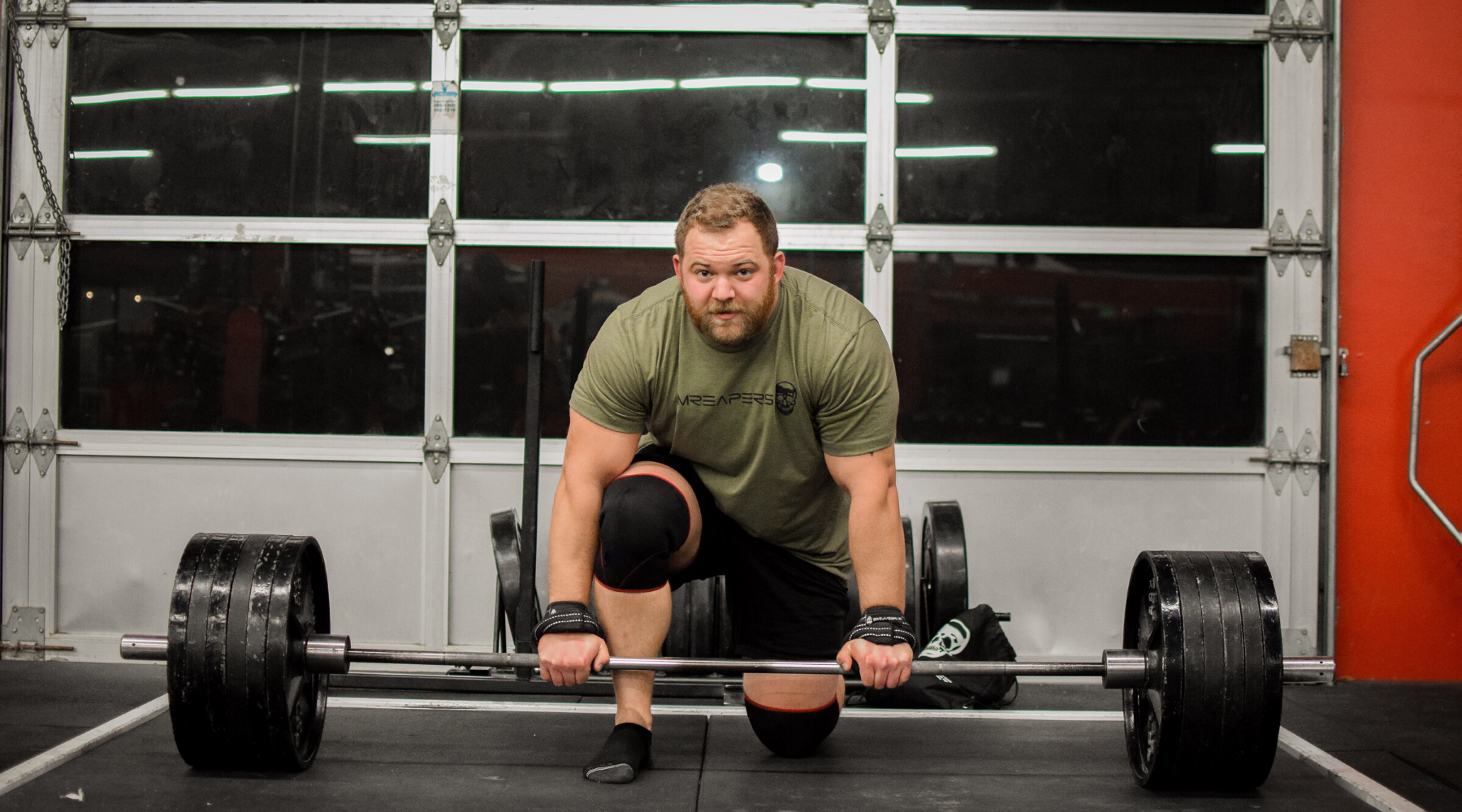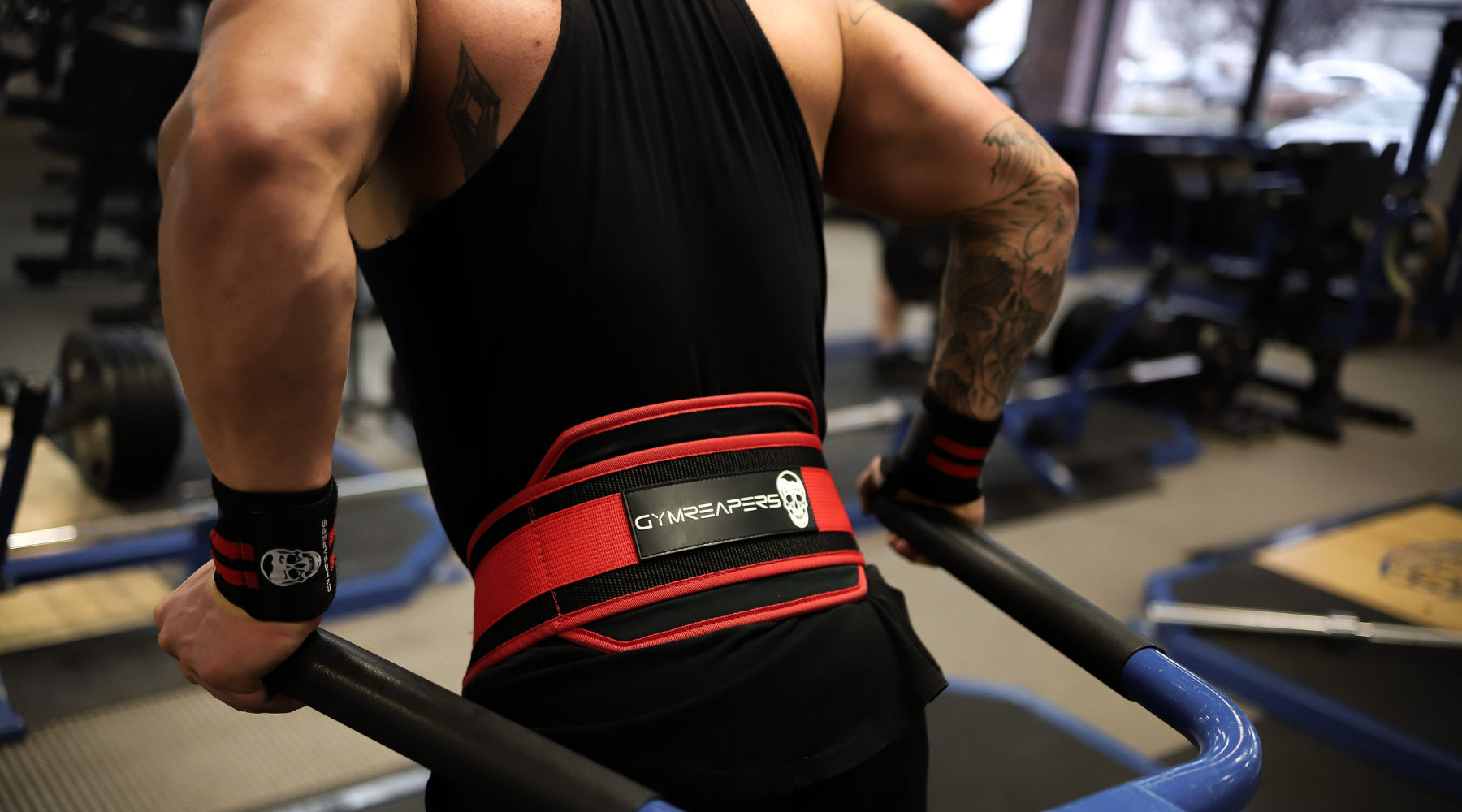Have you ever noticed the little dance motion and short pause that people do anytime they’re about to lift heavy? The next time you’re at the gym or watching a strongman competition, you’ll notice the dangling straps around the person’s wrist.
As they grab the barbell, they’ll first adjust and curl the lifting straps around the barbell and secure their grip. Suddenly, they lift the massive weight without any problem. So, what exactly do these lifting straps do for you and why should you care about them?
Want to lift like the pros? Check out our Gymreapers lifting straps and feel the difference in your grip and performance.
What are Lifting Straps?
Lifting straps (sometimes referred to as wrist straps) can be confusing to use at first, especially if you've never used them before. Not only can lifting straps be confusing, but they can be worn incorrectly by mistake, which causes you to not get the intended benefits of wearing them in the first place. Continue reading this post to learn how to properly use lifting straps.
Made from heavy-duty cotton, nylon, or leather, lifting straps have a variety of uses. The most common use for lifting straps is for heavy-duty liftings like deadlifts or other pulling exercises that work your traps (workouts like lat pulldowns and rows).
Lifting straps are designed to provide you with better grip control, allowing you to perform heavier reps.
The lasso lifting strap is a universal training strap that can be used by beginners as well as advanced lifters for a wide variety of exercises. Some exercises you can use lasso lifting straps for can include deadlifts, barbell rows, pulldowns, shrugs, and more.
Are there different types of Lifting Straps?
It's important to discern between the types of lifting straps available for training. Some options are lasso lifting straps, figure 8 lifting straps, lifting grips, and Olympic lifting straps. Each type of lifting strap serves its intended purpose and has its benefits.
You can learn more about the different types of weightlifting straps in our guide about the best lifting straps for weightlifting, powerlifting, and bodybuilding.
VERIFIED LIFTING STRAPS REVIEWS
How are Lifting Straps different from Wrist Wraps?
As you’re browsing for the right pair of lifting straps, you might come across wrists wraps. Although they might look similar, they serve a much different purpose. Wrist wraps are thicker and provide more support to the wrist joints, giving you stability for press and push movements.
During certain press and push movements, the wrist can experience excessive tension and result in possible injury and failed lifts. Most of us can use the extra support, so struggle and are looking for extra help during your heavy lifts, wrist wraps are worth having.
Shop Gymreapers Padded Lifting Straps
Why should I use Lifting Straps?
Let’s get into the benefits of having and using lifting straps. Put simply, if you’re looking for strength and size, then consider owning a pair of lifting straps. The number one benefit of using straps when you lift is that they allow you to exhaust the target muscle(s) without losing your grip. So, if you’re pushing yourself but sometimes feel like your grip is slipping, then use lifting straps.
Which exercises can you use lifting straps on?
If you’re looking to grow muscle size and improve your strength in your upper back, traps, and hamstrings you should do exercises like deadlifts, shrugs, barbell or dumbbell rows, or rack pulls. Using lifting straps during these workouts (on your heaviest reps) will help you increase strength and size.
Related Articles: Do Lifting Straps Prevent Calluses? Yes, Here's How
How to Secure Lifting Straps
There isn’t much complexity when putting on lifting straps, but in order to do so correctly, here are three easy steps. To put on your lifting straps and use them you will want to:
- Slide one end of the long strap through the loop opening as if making a circle
- Open your hands with your palms up and slide the loop over and onto your wrist
- Be sure that the end of each strap is aligned in the direction of your thumbs
How To Use Lifting Straps
Once you've put the lifting straps around your wrists, you’re ready to start using them. We've made a quick video below that shows you how to firmly secure your lifting straps to the barbell.
To recap the video, here's how to begin using your lifting straps:
- With one hand, select one end of the strap and place it on the bar
- Wrap the excess material in a twisting motion around the bar
- You can leave excess material hanging after one rotation around the barbell
- To tighten, cinch the strap so it has a snug fit on the barbell
Things to Remember when using Lifting Straps
You will want to ensure you cinch the straps and wrap it around the barbell. This is to help keep your wrist and hand tight to the barbell. One of the most common errors people make is that they leave the strap loose, which doesn't provide the support and grip you're looking for. Failing to do this can actually hurt your hand/wrist by not properly securing the straps.
After some time and usage, you will notice the benefits of isolating your muscles with your straps during pulling exercises. Some changes you might notice include less stress on your hands and wrists, as well as your forearms and biceps.
Related Article: Wrist Wraps Vs Lifting Straps: What Are the Differences?
The Takeaway on Lifting Straps
Whether you use wrist straps currently or are looking to start, there are definitely some great benefits. As with anything, use straps in moderation and don’t rely on them solely for all your heavy lifting. They are designed to help you with the toughest weight limits and can be a great tool to get bigger and stronger.
Gymreapers makes durable lifting straps with neoprene padding to prevent discomfort. They’re designed for use in powerlifting, bodybuilding, cross-fit, and general weightlifting. If you're looking for quality straps, give them a try.














Hinterlasse einen Kommentar
Alle Kommentare werden vor der Veröffentlichung geprüft.
Diese Website ist durch hCaptcha geschützt und es gelten die allgemeinen Geschäftsbedingungen und Datenschutzbestimmungen von hCaptcha.